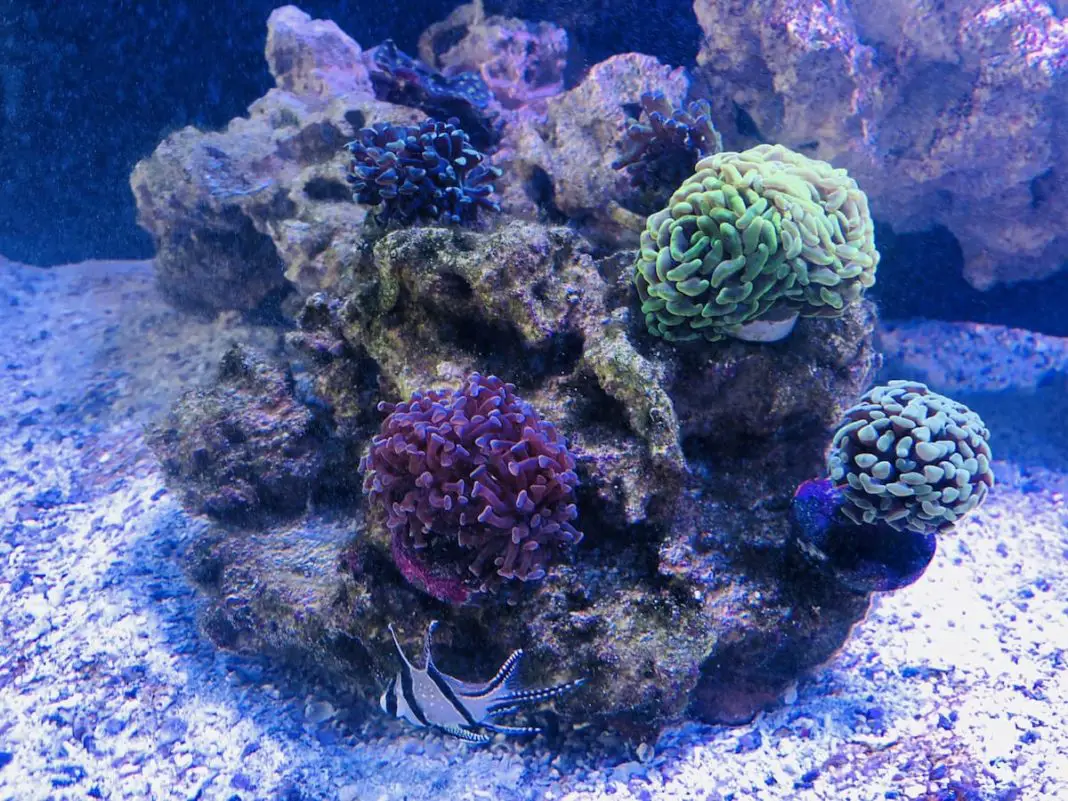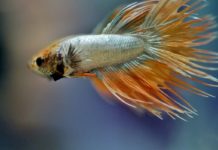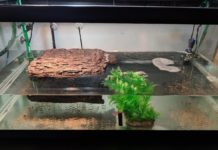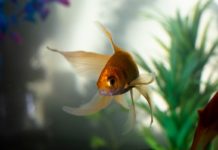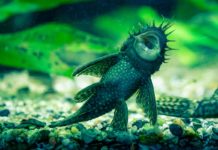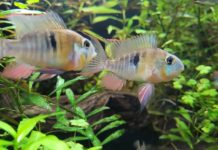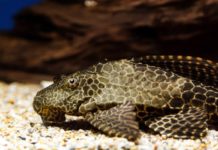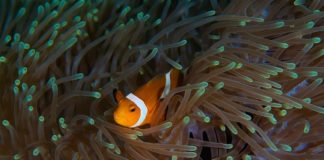Hammer corals, being a long-term growing invertebrate, can frustrate when it’s not fully extending as it should be. You don’t get to see these beautiful marine invertebrates come to their true beauty until you can see them fully open their polyps.
While it can be frustrating, the good news is that there’s hope. These shy creatures can eventually show you just how great they look once they’ve fully opened up.
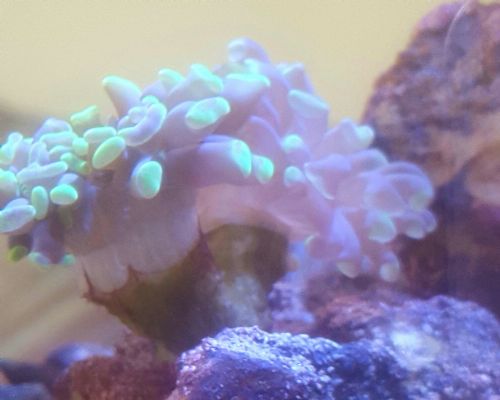
What To Do When Your Hammer Coral Isn’t Fully Extending?
If a hammer coral isn’t fully extending, you need to make sure that the alkalinity, salinity, hardness, and pH levels of water are correct. You should also check to see if you have an efficient filtration system, along with optimized co2 levels, and set the right temperature.
This is a quick overview of what can be done. Later in this article, we’ll discuss in better detail the right water parameters along with maintenance tips for a hammer coral so that it doesn’t happen again.
You add species like the hammer coral to add wonderful decor to your aquarium. Besides that, they only really come to their true beauty once they are fully open/extend themselves. Hammer corals open themselves by extending their tentacles/polyps. These tentacles/polyps grow into the beautiful looking structures that owners want to see.
If your hammer coral is not fully extending, then there’s a good chance that there are some issues with your water parameters.
Although, it’s important to note that the hammer coral will close itself up at night. Plus, hammer corals can sometimes take longer than usual to adjust to a new environment.
What Prevents A Hammer Coral From Extending Fully?
A hammer coral not extending is definitely an issue. There’re many reasons why the coral isn’t fully extending.
In most cases, it’s caused by water parameters, environmental issues, pollutants and debris, predators, and many more. We will take a look at these in more detail below.
First step: Test the Water
Hammer corals require ideal parameters to ensure healthy growth and for them to extend fully. If these parameters are off, it can cause issues for a hammer coral.
So, it’s very important that the parameters are met. Although, before that, you’ll need to test your water so that you can make changes accordingly.
When you know the current state of the tank’s water, let’s see what you should’ve had. The ideal parameters are:
- Specific Gravity – 1.024 to 1.026
- Temperature – 74° to 83°F (23° to 28°C)
- pH – 8 to 8.3
- Alkalinity – 450 to 550 ppm
- Ammonia – <0.1 ppm
- Phosphate – 0.02-0.05 ppm
- Calcium – 400-450 ppm
- Magnesium – 1200 – 1350 ppm
- Strontium – 5-15 ppm
- GH – 6.5-9 dkh
- KH – 8-12 dkh
Are Your Water Parameters Good?
Now that you know the ideal parameters for hammer corals to extend fully. It’s time to have a look at the parameters in a more detailed way. These parameters should be within the ideal range. If the parameters are more or less, it can be dangerous for a hammer coral’s health.
Alkalinity
Alkalinity is a major factor which ensures the well-being of hammer corals. If your water doesn’t have an acceptable range of alkalinity, it could be causing your hammer coral to retract.
If alkalinity is more than it should be, it could cause filtration issues within the tank. This can result in the hammer coral going into protective mode. So, it’s important to make sure to check alkalinity once in a while.
If the water’s alkalinity is lower than it should be, it may fluctuate the pH levels. This can result in the water becoming excessively acidic or basic upon the addition of acid/base.
Having good alkalinity levels helps with maintaining the pH of water. Alkalinity also supplies required carbonates and bicarbonates.
Salinity
Another crucial factor for hammer corals is the salinity level. Most fishes and plants won’t be sensitive to salinity like corals. If a hammer coral doesn’t get the minimum salinity level of water, it can actually fail. This can also explain a hammer coral’s tendency to keep itself closed.
Hammer corals require a minimum of 31 ppt of salinity level. Otherwise, they start to fail fast. So again, it’s important to make sure to check the salinity levels of your water every so often.
Hardness
Hardness refers to how much alkaline minerals are dissolved within the tank. Hammer corals need a definite hardness of the water, or they don’t grow.
There’re two types of hardness. One is the gH level and the other one is the kH level. kH refers to carbonate hardness, while the gH level refers to general hardness.
General hardness (GH) implies the amount of calcium and magnesium ions dissolved in the tank.
When the GH level is too high, it means that there’re a lot of calcium ions and no magnesium ions are present. This can cause issues for hammer corals.
Carbonate hardness (KH) refers to the carbonate and bicarbonates that are dissolved in the tank. It indicates the stability of the tank’s environment for living beings.
If the KH is higher than it should be, it means that it will be harder to change the PH level of the water. So, if your tank has a high PH level, having a high KH could be a problem.
The optimal GH rating for hammer corals is 6.5-9 dkh.
Nitrite and Nitrate
Nitrate levels can quickly cause hammer corals to become protective and won’t fully extend. You should always try to aim for 0 ppm nitrate to ensure the well-being of all your corals.
Fixing Your tank’s Water Parameters
You can fix the water parameters that are hindering your hammer coral from opening. This means that you can set the water hardness level, pH level, and ammonia level.
Balancing the pH Level
You can better set the pH level in the tank which will help the hammer coral to extend properly. The ideal pH level for hammer corals is 8.0-8.3. You’ll first need to test the pH level of the water in order to get the pH right.
If your tank’s pH isn’t in the 8.0-8.3 range, you need to get it right.
To increase or decrease your tank’s pH, you can first set your water neutral (pH=7) and then make changes to it. You can get pH stabilizer liquid or tablets products for that.
After that, you can add baking soda, which increases the pH. A general rule is to add 1 teaspoon of baking soda to 5 gallons of water. This method is considered to be safe. You need to take any fish out of the tank before adding baking soda.
If the pH gets too high, you can add Muriatic acid, which will lower the pH. You can do this by adding 1 ml Muriatic acid for 250 L of water until the pH matches the 8.0-8.3 range.
If your GH is lower than the minimum requirement of 6.5 you need to increase it up to 10. You can lower the gH with a mixture of 3 things-
- 1x teaspoon Baking Soda
- 1x teaspoon Epsom Salt
- 1x teaspoon Rock Salt
- 5 gallons of Dechlorinated Water
You should make separate mixtures according to the size of your tank. Doing this will reduce the gH level. Otherwise, you can use Seachem Equilibrium, which will balance and promote stability of the carbonate hardness.
If the gH level is too high and more than 10, you can lower the gH by adding reverse osmosis water to the tank. This is the easiest way of bringing down the gH level.
If the kH level is low, you can add Aquanatural Oolitic aragonite or Seachem alkaline buffer which can be used to increase kH.
If you need to lower the kH, you can use peat moss in mesh bags. You can add mesh bags to the water filter.
Could The Water Quality Be The Problem?
Now that we’ve covered that certain parameters are required for a hammer coral to be healthy and to fully extend. It’s time to have a quick look at water quality.
The water quality indicates the filtration level of the water. While water parameters are the requirements of minerals needed in the water.
When the water quality deteriorates, hammer corals can be seen to retract and close. This can be prevented, so let’s see the causes of bad water quality and what you can do to solve it.
Bad Filtration
Filtration removes any harmful substances that are present in the water. These substances can trigger the immunity of hammer corals. This can result, with a hammer coral not extending properly.
There are 3 main components of filtration required for the coral to be healthy. These are biological, mechanical, and chemical segments of the filtration process. If any of these are missing, it can cause the hammer coral to go into their “protective mode”.
When installing a filtration system, make sure that these 3 components are not missed. The mechanical part needs to contain filter sponges or pads that’ll filter the debris.
The biological part is most important, as it ensures that fish by-products aren’t turned into harmful ammonia. It converts any ammonia into less harmful nitrites and nitrates. Live sand and live rocks work great as being biological filters.
The last part is chemical filtration. This includes activated carbons and GFO. These are used to eradicate the toxic pollutants in the water that are red flags for hammer corals.
Ensuring the right filtration method is used will make the corals feel safe to open. A good example is the Fluval canister filter, which has the 3 mentioned aspects of filtration. Although, when using a canister filter, make sure to prime it correctly.
Water Temperature
The required water temperature for hammer corals to open properly is 74° to 83°F. A temperature that’s either below or above this can cause the hammer coral to act differently. If your tank isn’t within this range, it can be distressing for hammer corals.
So, it’s important to always try to maintain this temperature.
Water Flow
Water flow plays an important role for hammer corals. Lower water flow could cause detritus to accumulate on the coral.
CO2 Supply
Another culprit for a hammer coral not extending properly could be due to the CO2 levels. This is because it’s related to the pH of water. Higher CO2 levels will result in a greater amount of H2CO3 in the water. In turn, this increases the pH level of water.
If the pH level is lower than 8, then you need to use co2 scrubbers to reduce the co2 level in your water. Plus, if you run CO2 constantly in the tank, it may reduce the nutrient level in the water. This, in turn, triggers the coral to retract and stay closed.
How Good Is The Hammer Corals Living Conditions?
Now we’ll talk about the living conditions of hammer corals that may be hampering its problem to not fully extend. This will include its tank mates, pests and infections, or rapid environmental change. Any of these can result in the coral staying closed.
Other Competition
Hammer corals are seen to be intimidated by predators around them. It’s necessary for hammer corals to have predators, but in an aquarium, they’ll cause more trouble for them. It’s normal for hammer corals to close themselves even when small fishes start to poke them.
The main predators that you need to look out for are starfishes and coral-eating snails, as they will constantly disturb the corals and cause them to close up.
Pests & Infections
Hamer corals can have infestations with bugs, flatworms, or even spiders. The main culprits are red bugs and flatworms.
Flatworms can be seen as white freckles on a coral. These infestations could quickly cause the hammer coral to close, or stop its growth. If you believe this to be the case, there are commercial dips are found through which these pests and infestations can be eradicated.
Conclusion
While it can be frustrating to see your hammer coral not fully extending as it should, we have mentioned many solutions which should help to solve the problem.

